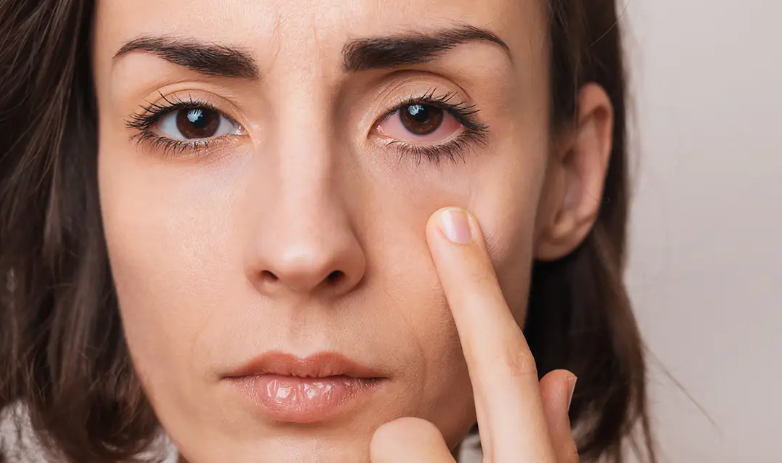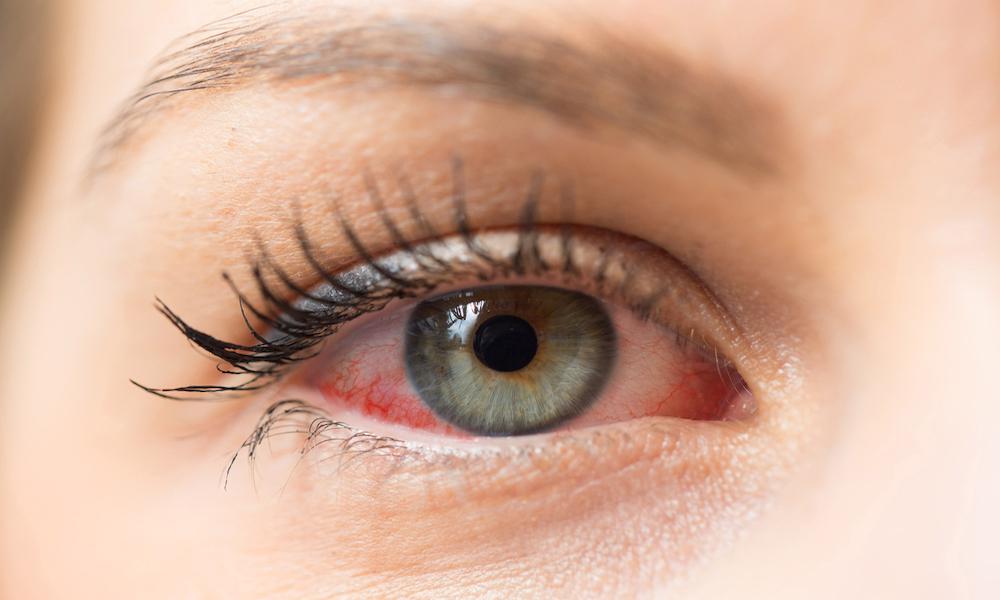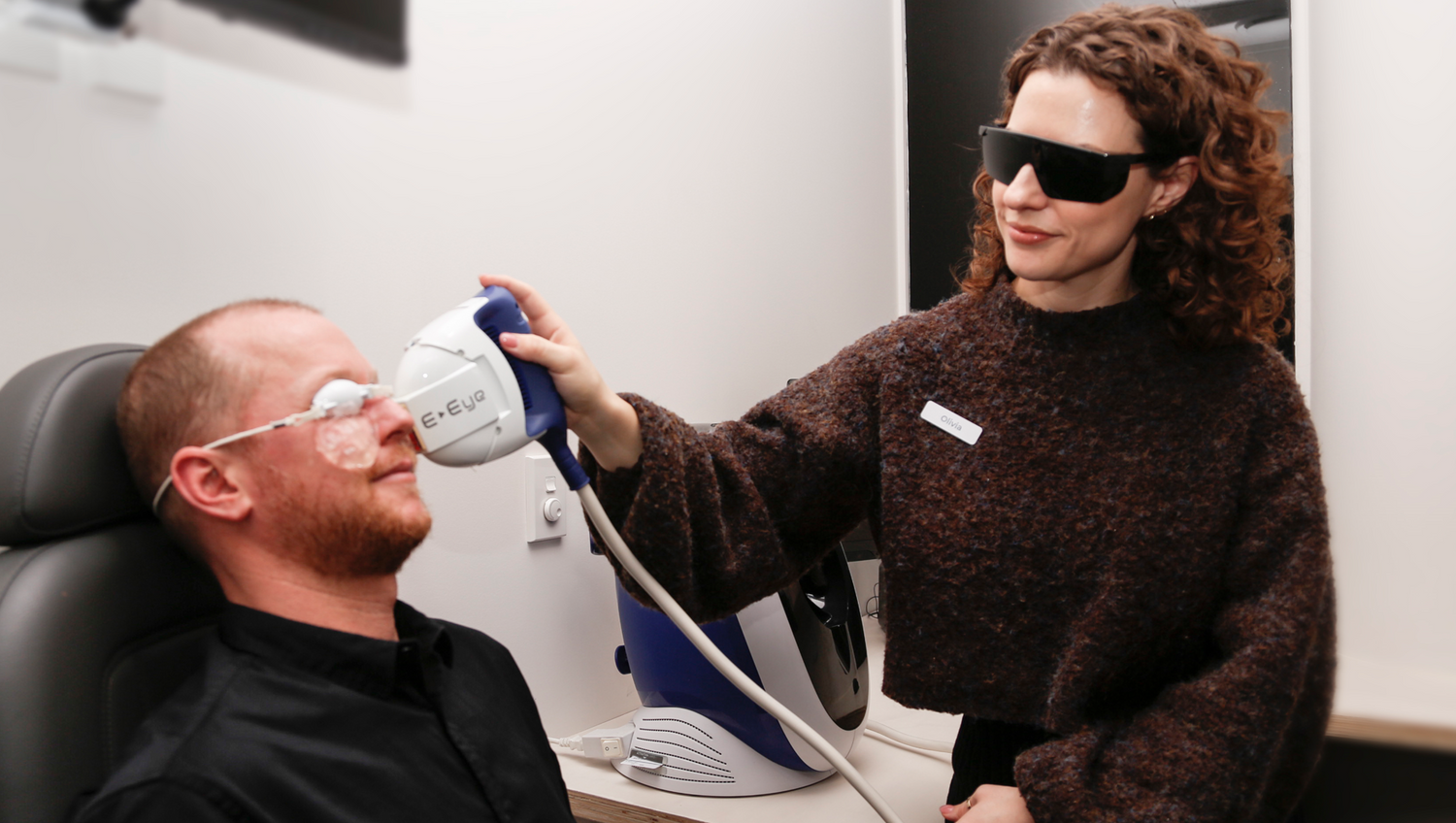Are your eyes feeling dry or irritated? You could be suffering from Dry Eye Syndrome.
Dry Eye Syndrome (DES) is a very common condition and can be resolved, with proper diagnosis and treatment. Affecting 20% of adults in New Zealand, DES can be frustrating, especially when it interferes with your day-to-day activities.

Do I have Dry Eye Syndrome?
Are your eyes itchy, scratchy, watery, sticky, sore, red, burny, blurry or just downright grumpy with you? …. Sounds like dry eye and the best thing you can do is have one of our optometrists take a look.
Book an appointment with one of our friendly optometrists, and we can take a comprehensive look at your eyes and recommend a treatment plan, if needed.
Learn more about Dry Eye Syndrome
What exactly is Dry Eye Syndrome?
Dry Eye Syndrome (DES) is a broad term describing any range of factors that reduce the volume of tears in the eye. Tears protect the front of the eye, providing lubrication and nutrients to the cornea and creating a smooth front surface for clear vision. They consist of a watery layer to keep the eyes moisturised with an oily layer on top. The oily layer is particularly important for maintaining a smooth surface for consistent vision, and preventing excessive tear evaporation. A reduction in the tear layer may be caused by blocked or poor performing oil glands.This is called Meibomian Gland Dysfunction (aka MGD).
Without good oils, the tears cannot lubricate the eye properly, causing symptoms which vary from a constant niggle, to severe irritation that affects your quality of life. This leads to dryness, irritation, redness and blurred vision.
Dry Eye Syndrome symptoms
- Blurry, fluctuating vision
- Feeling the need to blink more often
- Dryness
- Gritty, irritated sensation
- Stinging or achiness
- Overly-watery eyes
- Eye and eyelid redness
- Sensitivity to light
Symptoms can be different for everyone, and fluctuate due to environmental factors; such as wind, air conditioning, artificial lighting, using your computer or smartphone, air pollution, driving, wearing contact lenses etc.
Who's at risk of getting Dry Eye?
Dry Eye Syndrome tends to affect females more than males, and can be part of the natural aging process (especially during menopause). As well as a side effect to many medications, including oral contraception.
If you have arthritis, asthma, gout, diabetes, or are over 40 years old, you may also be prone to dry eye.
What is the best way forward?
Those who suffer from dry eye, try an average of 13.8 different types of eye drops before seeing an Optometrist. Don’t wait. Eye drops only offer temporary relief, whereas the team at OCULA will do a thorough eye examination to find the underlying cause of the problem.
How we diagnose and treat Dry Eye Syndrome
-
We take a personalised approach to diagnosing and treating Dry Eye Syndrome. Our services include:
- Comprehensive Eye Examination: We conduct a detailed eye exam to assess the health of your eyes and identify the underlying cause of your symptoms.
- Tear Film Analysis: We evaluate the quality and quantity of your tears using advanced diagnostic tools to determine your dry eye type.
-
- Meibomian Gland Evaluation: For evaporative dry eye, we examine the function of your meibomian glands to identify blockages or dysfunction.
- Personalised Treatment Plan: Based on the findings, we create a tailored treatment plan that may include artificial tears, lubricating or prescription eye drops, and eye wipes. We also recommend lifestyle modifications and nutritional supplements to reduce symptoms.
Dry Eye Syndrome Treatments
We provide a range of treatments to manage and treat symptoms
Prescription Eye Drops
There are a variety of eye drops that are used to provide temporary relief of symptoms of dry eye and meibomian gland dysfunction.
For more severe or persistent dry eye, prescription medications can be used to reduce inflammation and increase tear production.
Warm Compress
Warm compresses help prevent gland blockages and relieve discomfort. Our warm compress eye mask is more effective than a face cloth or wheat bag, providing sustained, moist heat that helps clear blockages and ease dry eye symptoms.
Dietary Supplements
There’s strong evidence that omega-3 oils help reduce dry eye symptoms due to their anti-inflammatory properties. In New Zealand, adults are advised to eat two servings of oily fish weekly to meet omega-3 needs. If fish isn’t part of your diet, high-quality supplements can help. Our optometrists recommend Bioceuticals UltraClean DHA/EPA Plus.
E-Eye IPL (Intense Pulsed Light) Therapy
IPL is one of the most effective treatment options, providing long-term relief of dry eye symptoms. For more information on what it is, how it works, what happens in a session and how many sessions you’ll need, head to our IPL treatment page.
Environmental Adjustments
Increasing humidity in the environment, reducing screen time, and taking frequent breaks to rest the eyes can also help to alleviate dry eye symptoms.
Eyelid Hygiene
ZEST (Zocular Eyelid System Treatment) is a professional in-clinic procedure that deeply cleans the eyelids to remove debris, bacteria, and blockages that contribute to dry eye. Using a natural okra-based gel, it helps restore healthy meibomian gland function and reduces inflammation. The treatment is quick, gentle, and offers immediate relief for symptoms like dryness, irritation, and eyelid discomfort.
It's time to see an expert!
Don't let Dry Eye Syndrome affect your day-to-day life. Let our team treat your eyes today.



